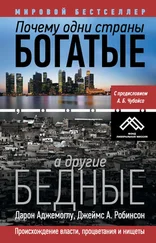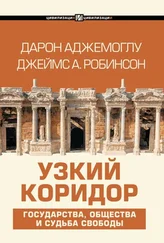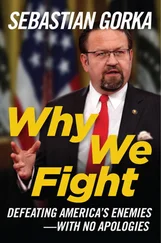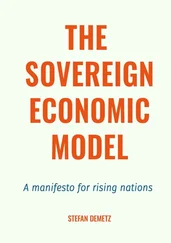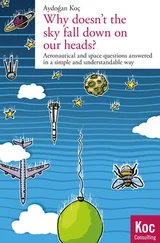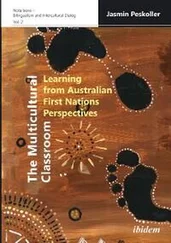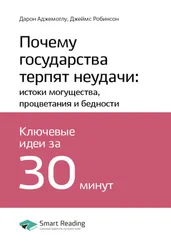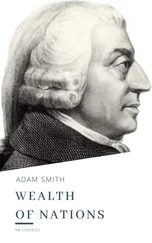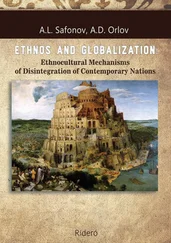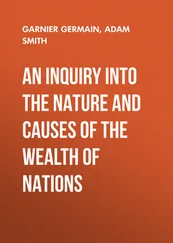In Sierra Leone and in much of sub-Saharan Africa, the vicious circle took the form of the extractive institutions set up by colonial powers being taken over by postindependence leaders. In Guatemala, as in much of Central America, we see a simpler, more naked form of the vicious circle: those who have economic and political power structure institutions to ensure the continuity of their power, and succeed in doing so. This type of vicious circle leads to the persistence of extractive institutions and the persistence of the same elites in power together with the persistence of underdevelopment.
At the time of the conquest, Guatemala was densely settled, probably with a population of around two million Mayas. Disease and exploitation took a heavy toll as everywhere else in the Americas. It was not until the 1920s that its total population returned to this level. As elsewhere in the Spanish Empire, the indigenous people were allocated to conquistadors in grants of encomienda . As we saw in the context of the colonization of Mexico and Peru, the encomienda was a system of forced labor, which subsequently gave way to other similar coercive institutions, particularly to the repartimiento , also called the mandamiento in Guatemala. The elite, made up of the descendants of the conquistadors and some indigenous elements, not only benefited from the various forced labor systems but also controlled and monopolized trade through a merchant guild called the Consulado de Comercio. Most of the population in Guatemala was high in the mountains and far from the coast. The high transportation costs reduced the extent of the export economy, and initially land was not very valuable. Much of it was still in the hands of indigenous peoples, who had large communal landholdings called ejidos . The remainder was largely unoccupied and notionally owned by the government. There was more money in controlling and taxing trade, such as it was, than in controlling the land.
Just as in Mexico, the Guatemalan elite viewed the Cadiz Constitution (this page–this page) with hostility, which encouraged them to declare independence just as the Mexican elites did. Following a brief union with Mexico and the Central American Federation, the colonial elite ruled Guatemala under the dictatorship of Rafael Carrera from 1839 to 1871. During this period the descendants of the conquistadors and the indigenous elite maintained the extractive economic institutions of the colonial era largely unchanged. Even the organization of the Consulado did not alter with independence. Though this was a royal institution, it happily continued under a republican government.
Independence then was simply a coup by the preexisting local elite, just as in Mexico; they carried on as usual with the extractive economic institutions from which they had benefited so much. Ironically enough, during this period the Consulado remained in charge of the economic development of the country. But as had been the case pre-independence, the Consulado had its own interests at heart, not those of the country. Part of its responsibility was for the development of infrastructure, such as ports and roads, but as in Austria-Hungary, Russia, and Sierra Leone, this often threatened creative destruction and could have destabilized the system. Therefore, the development of infrastructure, rather than being implemented, was often resisted. For example, the development of a port on the Suchitepéquez coast, bordering the Pacific Ocean, was one of the proposed projects. At the time the only proper ports were on the Caribbean coast, and these were controlled by the Consulado. The Consulado did nothing on the Pacific side because a port in that region would have provided a much easier outlet for goods from the highland towns of Mazatenango and Quezaltenango, and access to a different market for these goods would have undermined the Consulado’s monopoly on foreign trade. The same logic applied to roads, where, again, the Consulado had the responsibility for the entire country. Predictably it also refused to build roads that would have strengthened competing groups or would have potentially undone its monopoly. Pressure to do so again came from western Guatemala and Quezaltenango, in the Los Altos region. But if the road between Los Altos and the Suchitepéquez coast had been improved, this could have created a merchant class, which would have been a competitor to the Consulado merchants in the capital. The road did not get improved.
As a result of this elite dominance, Guatemala was caught in a time warp in the middle of the nineteenth century, as the rest of the world was changing rapidly. But these changes would ultimately affect Guatemala. Transportation costs were falling due to technological innovations such as the steam train, the railways, and new, much faster types of ships. Moreover, the rising incomes of people in Western Europe and North America were creating a mass demand for many products that a country such as Guatemala could potentially produce.
Early in the century, some indigo and then cochineal, both natural dyes, had been produced for export, but the more profitable opportunity would become coffee production. Guatemala had a lot of land suitable for coffee, and cultivation began to spread—without any assistance from the Consulado. As the world price of coffee rose and international trade expanded, there were huge profits to be made, and the Guatemalan elite became interested in coffee. In 1871 the long-lasting regime of the dictator Carrera was finally overthrown by a group of people calling themselves Liberals, after the worldwide movement of that name. What liberalism means has changed over time. But in the nineteenth century in the United States and Europe, it was similar to what is today called libertarianism, and it stood for freedom of individuals, limited government, and free trade. Things worked a little differently in Guatemala. Led initially by Miguel García Granados, and after 1873 by Justo Rufino Barrios, the Guatemalan Liberals were, for the most part, not new men with liberal ideals. By and large, the same families remained in charge. They maintained extractive political institutions and implemented a huge reorganization of the economy to exploit coffee. They did abolish the Consulado in 1871, but economic circumstances had changed. The focus of extractive economic institutions would now be the production and export of coffee.
Coffee production needed land and labor. To create land for coffee farms, the Liberals pushed through land privatization, in fact really a land grab in which they would be able to capture land previously held communally or by the government. Though their attempt was bitterly contested, given the highly extractive political institutions and the concentration of political power in Guatemala, the elite were ultimately victorious. Between 1871 and 1883 nearly one million acres of land, mostly indigenous communal land and frontier lands, passed into the hands of the elite, and it was only then that coffee developed rapidly. The aim was the formation of large estates. The privatized lands were auctioned off typically to members of the traditional elite or those connected with them. The coercive power of the Liberal state was then used to help large landowners gain access to labor by adapting and intensifying various systems of forced labor. In November 1876, President Barrios wrote to all the governors of Guatemala noting that
because the country has extensive areas of land that it needs to exploit by cultivation using the multitude of workers who today remain outside the movement of development of the nation’s productive elements, you are to give all help to export agriculture:
1. From the Indian towns of your jurisdiction provide to the owners of fincas [farms] of that department who ask for labor the number of workers they need, be it fifty or one hundred.
Читать дальше

